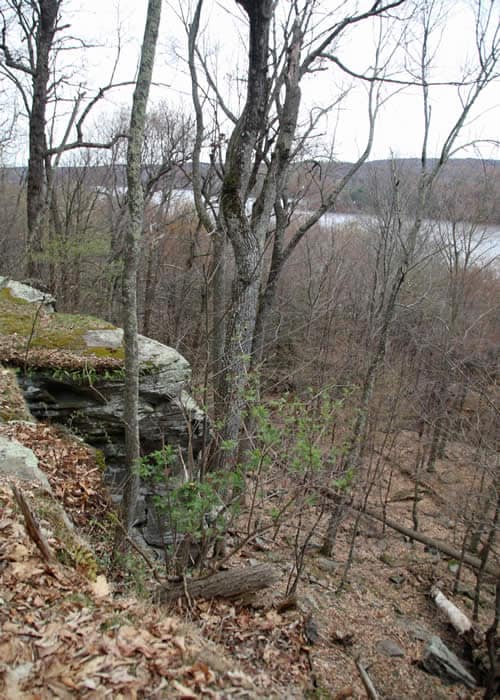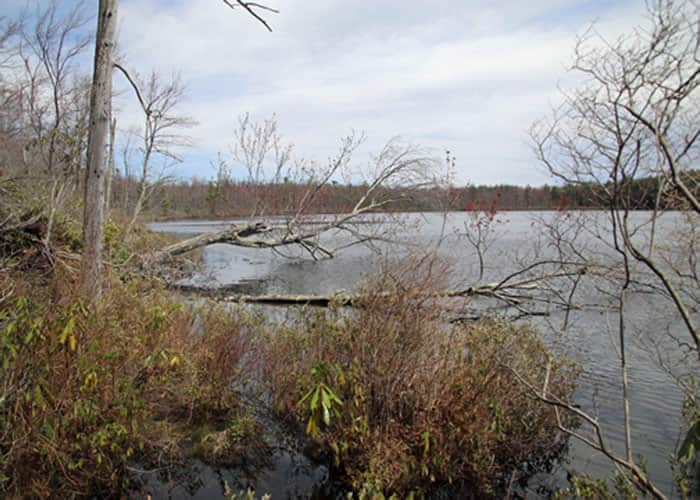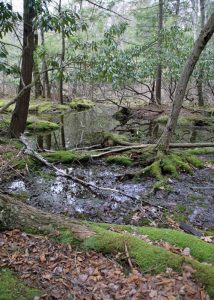
Lacawac Sanctuary

IF YOU GO
Where: Lacawac Sanctuary is in Lake Ariel, Pa. On Route 507 North, pass under Route 84. From the underpass, go six-tenths of a mile. You will see a brown Lacawac Sanctuary sign, indicating your left turn onto Ledgedale Road. Continue following the brown Lacawac Sanctuary signs. Pass through Sterling Marina, go two-tenths of a mile and go right on the unpaved Sanctuary Road to the sanctuary parking.
GPS coordinates: 41.376739, -75.299878
Trail information: A moderate, 3-mile loop hike can be created of three trails, ranging from an easy, well-marked, wide and mostly level trail to the orange-blazed trail, which leads through deep woods and becomes demanding.

KNOW BEFORE YOU GO:
- Open dawn to dusk. A $10 per-car donation is requested.
- Lacawac Sanctuary is a research center with public trails and a prehistoric lake. It is also home to an Adirondack-style family compound, built in 1903 by a Scranton coal baron. The buildings are open only on guided tours.
- The visitor center has an interesting one-room nature museum and restrooms. Trash receptacles are available at the outdoor information kiosk, which offers maps and historical information.
- Leashed dogs welcome. Owners must pick up and carry out waste.
- No motorized vehicles or trail bikes allowed on trails.

Finding spring at Lacawac Sanctuary
By Carol Hillestad
Just beyond a Lake Wallenpaupack boatyard, in a neighborhood of neat summer cabins and tucked at the end of a single-lane dirt road, is a natural jewel: the 545-acre Lacawac Sanctuary. The heart of the sanctuary is pristine Lake Lacawac, formed by a mile-high glacier just 10,000 years ago, during the last Ice Age.
This lake was my ultimate destination one balmy spring morning. But I decided first to see what life was stirring on land that surrounds and protects the lake. From the sanctuary parking area, trails fan out in all directions. Since I’m a pushover for a view, I decided on a loop that included parts of three trails — and promised an overlook at Wallenpaupack.

Further along, a manmade pond was home to an occupied osprey nesting tower. A pair of hooded mergansers splashed and chased each other, flapping and diving in an elaborate mating display. Turtles sunned themselves near two beaver lodges.
Orange blazes led me through a deeper woodland, with more glimpses of beautiful wetlands sparkling in the sun. The trail was trending downhill. Early shoots of wildflowers such as trout lilies, columbine, elderberry and Quaker ladies – as well as rock tripe, reindeer moss and many other varieties of lichen – were everywhere. Past an old deer exclosure, a spur in the trail led to my reward: a lichen-covered rock ledge and a bench with a view of Lake Wallenpaupack, a sheer drop of 250 feet below.
Ponds, wetlands, bogs and unnamed spring runs — all the water from this preserve flows to Wallenpaupack Creek and then to the Lackawaxen River, before reaching the Delaware. The majestic Delaware River flows past Philadelphia to Delaware Bay, where it pours into the Atlantic Ocean near Cape May. The land drained by the Delaware is home to 7.3 million people, and provides drinking water for twice that many.
So conserving land such as Lacawac Sanctuary protects more than Lake Lacawac itself — it protects drinking water for millions.
The morning was fading. I finally made it to Lake Lacawac, taking a mile loop from the trailhead that started out easy and quickly became demanding. The lake is a 52-acre vestige of our very ancient past. It has been called “the southernmost unpolluted glacial lake in North America.” Its waters are so pure that today it is a center of international research on preserving and protecting lakes.
I’ve only scratched the surface of this ice-created wonder of a place, and will surely be back.
Carol Hillestad is a hike leader and writer for Get Outdoors Poconos, a grant-funded series administered by Brodhead Watershed Association.
Comments from other hikers:
JOHN of New Jersey: Great hike. Wonderful spot. Will go back. Thanks!
LINDA: The trails were very well marked. Definitely a hike to return to, and explore the other trails!
FRED of Pocono Pines: Such nicely groomed trails.
PATTI of Canadensis: Great hike; thanks for sharing another amazing place to revisit!
ANONYMOUS: The deep woods experience of walking these trails was an unbelievable adventure. We saw some very pretty mushrooms (poisonous, I’m sure), and two orange salamanders or newts. We are still wondering what those were! It was peaceful and just a little spooky: probably my imagination, but I’m from Washington state, where cougars and bears share some of the reserved lands.